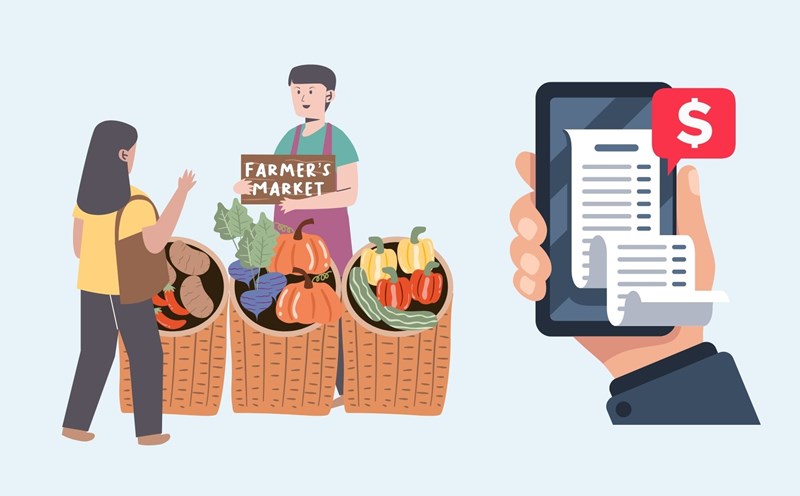Old habits make it difficult for business households to switch to the new mechanism
According to Ms. Le Yen - CEO of Hanoi Tax Consulting Company Limited (Hanoitax), the habit of buying goods without invoices comes from the old contract mechanism: no documents, no accounting system, no tax declaration, no financial reporting and no tax settlement. Due to not having to prove input - output, business households do not proactively get invoices when importing goods, leading to the majority of current inventories not having valid documents.
From June 1, 2025, tens of thousands of households and individuals in business have officially switched to using pre-cious computers directly connected to tax authorities to issue electronic invoices for each transaction. This is a step forward in administrative reform, contributing to revenue transparency and increasing the effectiveness of preventing budget losses.
However, according to Ms. Le Yen, this conversion process also revealed significant concerns from taxpayers, notably the issue of handling inventory without input invoices.
In reality, most retailers, who sell functional foods, cosmetics, construction materials, etc. often buy from unit markets, small retailers, or hand-carried goods - supplies without value-added invoices. In many cases, not getting invoices comes from the mentality of "taking invoices is expensive", "if retail, why need invoices", or suppliers are not willing to issue invoices.
The transition to a new mechanism, in which all transactions must issue invoices via cash registers, has left many households in a passive situation. Not only worrying about technique, they also wonder: Can old inventories without invoices be sold? Will I be punished if I am checked? How will the origin of the goods be proven?
According to the Law on Tax Administration 2019 (Article 16, Article 17) and Circular 80/2021/TT-BTC, if the legality of input goods cannot be proven, business households can:
Being taxed at reasonable costs, leading to increased taxable income;
Tax collection, fines and late payment;
Being administratively sanctioned for violations of invoices and documents;
In some cases, the tax inspection and examination records were transferred.
Group division and flexible processing
According to Ms. Le Yen's instructions, businesses can divide into groups for flexible handling.
For common items such as consumer goods and cosmetics, inventory of inventories should be conducted until May 31, 2025. The establishment of a statement clearly stating the quantity, unit price, and status of input documents can be used as a basis for issuing valid invoices after June 1.
For sensitive goods such as drugs, functional foods, and cosmetics with therapeutic benefits, if the origin cannot be proven, they can easily be classified as counterfeit or smuggled goods. Business households need to proactively contact suppliers in advance to get a refund of invoices and documents (if possible), in order to legalize this commodity.
Regarding uninvoiced inventories, the CEO of Hanoitax recommends that tax authorities issue appropriate messages and handling methods such as:
1. Issue official instructions on how to handle inventory without input invoices.
2. Accept the inventory statement with confirmation from the business household as the basis for tax calculation when selling after June 1.
3. Classify high-risk goods to require additional documents or special handling.
At the same time, the State needs to clearly propagate that the policy goal is to be transparent, not to punish en masse. Without specific support and guidance, it is likely that business households will be afraid, narrow operations, and even temporarily suspend business to avoid risks. This is something that no one wants in the current important transformation process, said Ms. Le Yen.










